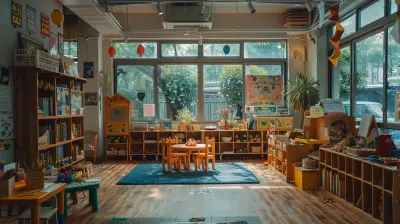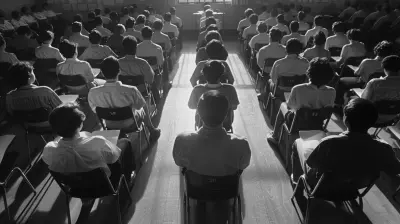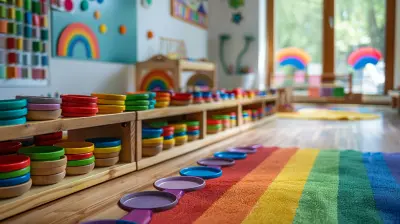31 May 2025
Introduction
Let's be honest—social media is everywhere. From Twitter threads to viral TikTok videos, our students are constantly consuming content. But with that comes a major challenge: how do they separate fact from fiction?
As teachers, it's our job to help them think critically about what they see online. We can't just tell them, "Don't believe everything you read on the internet." Instead, we need to teach them how to analyze, question, and verify information.
This guide will walk you through practical strategies for fostering critical thinking in your students. Let's dive in! 
Why Critical Thinking Matters More Than Ever
Back in the day, if you wanted information, you turned to books, newspapers, or trusted news sources. Today? A meme on Instagram can spread misinformation faster than wildfire.Misinformation, fake news, and biased content dominate social media. If students don’t develop strong critical thinking skills, they risk falling for clickbait headlines, conspiracy theories, and manipulative content.
Critical thinking isn't just a "nice-to-have" skill—it’s a necessity in today’s digital world. 
The Challenges of Social Media
1. Information Overload
Every second, millions of posts, tweets, and videos flood social media. Students are bombarded with so much content that distinguishing between valuable information and nonsense becomes overwhelming.2. Echo Chambers & Confirmation Bias
Social media platforms show users content that aligns with their beliefs. This creates "echo chambers," where students only see information that reinforces their existing opinions. When this happens, they’re less likely to question or analyze different perspectives.3. Misinformation & Fake News
Some people create misleading content just for clicks, while others do it to push an agenda. Either way, students need to know how to spot false information before sharing it.4. Emotional Manipulation
Many posts are designed to evoke strong emotions—anger, fear, or excitement—so that people engage with them. But these emotional reactions can cloud judgment and make students more likely to believe and spread misleading content.Now that we know the challenges, let’s talk about how we can equip students with the tools they need to think critically. 
Strategies for Teaching Critical Thinking in the Social Media Era
1. Teach Students to Question Everything
Encourage students to ask:- Who created this content?
- What is their motive?
- Where is the evidence?
- When was this posted (is it outdated)?
- Why was this shared (to inform, entertain, or manipulate)?
By fostering a habit of questioning, students become more skeptical of content that seems too good (or too bad) to be true.
2. Fact-Checking: The Non-Negotiable Skill
Introduce students to reliable fact-checking websites like:- Snopes
- FactCheck.org
- PolitiFact
Challenge them to verify trending stories before believing or sharing them. Make fact-checking a classroom activity—turn it into a game where they debunk viral misinformation.
3. Spotting Clickbait & Sensationalized Headlines
Show students examples of exaggerated headlines, then compare them to reputable news sources. Teach them that shocking titles are often designed to grab attention rather than provide accurate information.Tip: If a headline makes you feel extremely angry or excited, it’s a good idea to pause and verify before reacting.
4. Understanding Bias & Perspective
Every piece of content has some level of bias. Help students recognize biased reporting by comparing multiple news sources on the same topic.Activity idea: Pick a controversial topic and have students analyze how different media outlets cover it. Do they notice differences in tone, wording, or framing?
5. Encouraging Healthy Skepticism Without Cynicism
Skepticism is good—but we don’t want students to become cynical and think everything is a lie. The goal is to help them develop a balanced approach:- Be open-minded but cautious
- Trust credible sources but verify information
- Be curious but not gullible
6. The Power of Digital Footprints
Many students don’t realize how their online activity affects their digital footprint. Teach them to be mindful of what they share and how it can impact their reputation.Pro tip: Challenge them to Google themselves and see what kind of digital trace they’re leaving behind.
7. The Role of Emotional Intelligence
Critical thinking isn’t just about logic—it’s also about emotions. When students recognize how emotions influence their reactions, they learn to pause before reacting to sensational content.Teach them to ask:
- Why am I reacting this way?
- Is this post designed to trigger an emotional response?
- Should I verify this information before sharing?
8. Encouraging Meaningful Discussions
Create a classroom environment where students feel comfortable discussing their opinions. Encourage debates, group discussions, and respectful disagreements.Instead of assigning research papers with a single correct answer, challenge students to explore different perspectives and defend their viewpoints with evidence.
9. Modeling Critical Thinking as a Teacher
Students learn by example. If you demonstrate critical thinking in the classroom—questioning sources, verifying facts, and analyzing media critically—students will follow suit.Next time a viral news story breaks, bring it into the classroom. Fact-check it together. Show them how you process information in real-time. 
Practical Activities to Develop Critical Thinking
1. Real vs. Fake News Challenge
Bring in news articles (some real, some fake) and have students identify which is which. Ask them to explain their reasoning.2. Social Media Post Analysis
Take a viral social media post and break it down:- Who posted it?
- What’s the source?
- Is there evidence to support the claim?
- How does it make you feel?
3. Video Deconstruction
Analyze YouTube videos or TikToks that make bold claims. Research whether the claims are supported by reliable sources.4. "Two Truths and a Lie" Activity
Students create three statements about a news story (two true, one false). Their classmates have to determine the false one.5. Echo Chamber Experiment
Have students temporarily create a social media feed based on extreme biases (e.g., only following one political viewpoint), then discuss how it affects their perception of the topic.Final Thoughts
Social media isn't going anywhere, and misinformation will only get more sophisticated. The best defense? Teaching students how to think critically.By questioning information, verifying sources, and recognizing bias, students can navigate social media with confidence. And as teachers, we have the power to make that happen.
Empower them to think for themselves—because in the digital age, critical thinking is the superpower they need the most.








Zane Marks
This article beautifully highlights the essential role of critical thinking in navigating social media. Thank you for sharing practical insights that can empower educators to guide students in today’s digital landscape.
November 14, 2025 at 5:25 AM